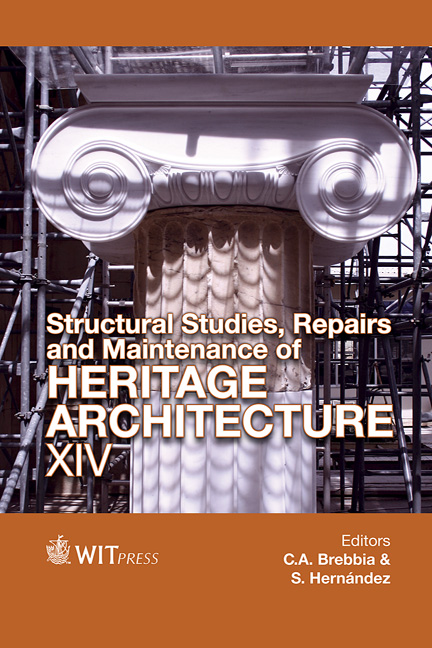Historical Iron Tie-rods In Vaulted Structures: Parametrical Study Through A Scaled Model
Price
Free (open access)
Transaction
Volume
153
Pages
12
Page Range
669 - 680
Published
2015
Size
1,538 kb
Paper DOI
10.2495/STR150561
Copyright
WIT Press
Author(s)
J. Mora-Gómez
Abstract
Iron tie rods have been used for centuries both as auxiliary and as reinforcing elements for vaulted structures. Their presence in heritage buildings is widespread in some regions such as Italy, and in many cases they have become historical elements with their own value as testimony of past constructive solutions. The appreciation and study of these elements is an active field of research. Their conservation implies searching for a better understanding of the structural behaviour and the interactions between ties and masonry, which still is not fully understood. Through time, architectural manuals and treatises have evolved in their recommendations on the best way to apply them, mainly about the position and constructive solutions. This research is based on a case study that shows many different typologies due to consecutive reinforcing interventions. The structural performance of the different cases is studied through a simplified scaled model executed following Heyman’s structural masonry theories and the correspondent limit analysis. Applying the reinforcements identified in the case study and treatises, the model has been subject to load tests, taking measurements of collapse load, impost displacement and formation of collapse mechanisms. Thus, it is studied directly in the model how every solution provides a different structural enhancement. Going further, the combination of tie-rods with other reinforcing methods has been analysed. Besides, the results are compared to a parallel limit analysis, in order to discuss some of the assumed simplifications taken in this type of analysis.
Keywords
tie-rods, masonry structures, vaulted structures, strengthening techniques, traditional constructive techniques




